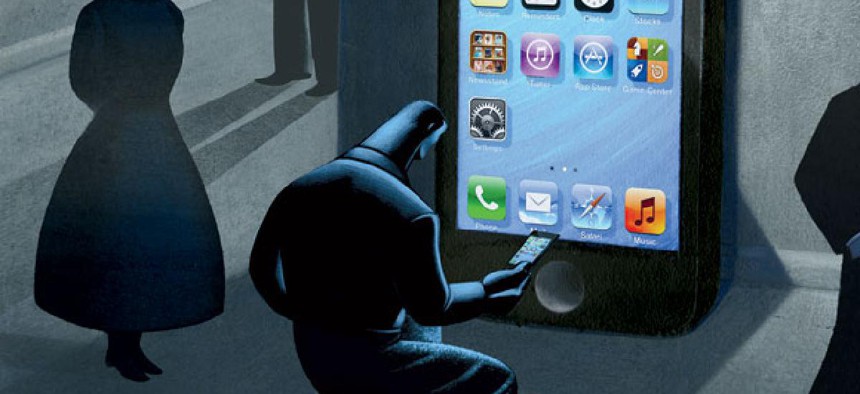
Jon Krause
Rolling Out The iPhone
After a trial run, ICE issues Apple devices for work and personal use.
Following a three-month trial, Immigration and Customs Enforcement in January began distributing as many as 17,000 secure iPhones to employees for work and personal use. The devices are equipped with software to protect both government and personal data.
Personnel allotted iPhones are allowed to download apps for private use, as long as the software and data do not violate policies, according to ICE officials.
“These are government devices and ICE has a limited personal use policy that provides for users to add applications and data that does not violate professional conduct standards of the agency,” ICE Press Secretary Barbara Gonzalez says. “The devices are subject to inspection or retrieval—just like any piece of government equipment.”
The agency is distributing the devices in batches to investigators, legal personnel and other staff.
“We’re using a geographical-based deployment plan,” Gonzalez says.
In October 2012, ICE disclosed that it would replace its existing Research in Motion BlackBerry smartphones with Apple iPhones because RIM’s products could no longer meet the agency’s needs.
After evaluating RIM’s rate of innovation, business model sustainability and the attributes of other smartphones, including Android devices, ICE chose the iPhone, according to contracting papers.
The iPhones are set up for selective wiping if a device is misplaced or stolen so ICE can erase government data remotely
but preserve personal apps and files, according to Good Technology, a mobile security firm facilitating the rollout.
Eugene Liderman, director of public sector technology for Good Technology, says the agency has the infrastructure to scale up to 17,000 users. The company is under contract to secure up to 25,000 users, he adds.
For 18 months before the iPhone announcement, Good Technology worked with Homeland Security Department officials, including the inspector general, to ensure its technology could shield data and applications from hackers and unauthorized people using the phones, company officials say.
Beyond tight security, the features ICE was looking for in a new smartphone included reliability and the flexibility to handle “fingerprint and retina scanning for immediate identification of an individual,” as well as facial recognition, according to agency documents.
Agencies are shedding BlackBerrys to buy Apple and Android-based smartphones that offer more features, according to Government Executive Media Group research. BlackBerry use among federal managers dropped 77 percent between August 2009 and September 2011, while iPhone use nearly tripled.
Hoping to bounce back, RIM announced in December that ICE is testing its BlackBerry 10 business line. Like older versions, the new Blackberrys comply with a government encryption specification for sensitive data called Federal Information Processing Standard 140-2. Apple’s phones are not FIPS-certified yet.
Good Technology officials say their software provides the same kind of agencywide control over device settings and data access that comes with BlackBerry services, when layered on top of the iPhone’s operating system.
Last fall, ICE officials gave both Apple and RIM top security scores in documents justifying the agency’s plan. ICE praised the companies for controlling both the hardware and operating systems in their products. Google’s Android, which received a low security score, provides only an operating system and allows other companies to run it on their devices.
“What is a strength for Google is a risk for ICE,” the documents state.
“Analysis conducted by ICE has concluded that for the near term, Apple iPhone services offer the agency the best solution for its mobile technology,” the justification says. “Apple’s strict control of the hardware platform and operating system, independent of telecommunication vendor, provides ICE with the greatest degree of control and management to ensure the most reliable delivery of services to ICE’s mission users.”
NEXT STORY: Tech Roundup







